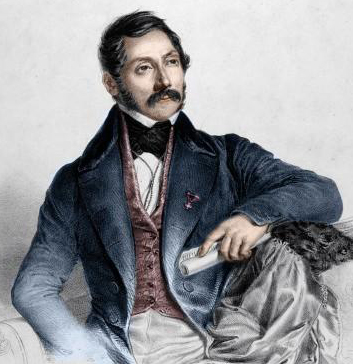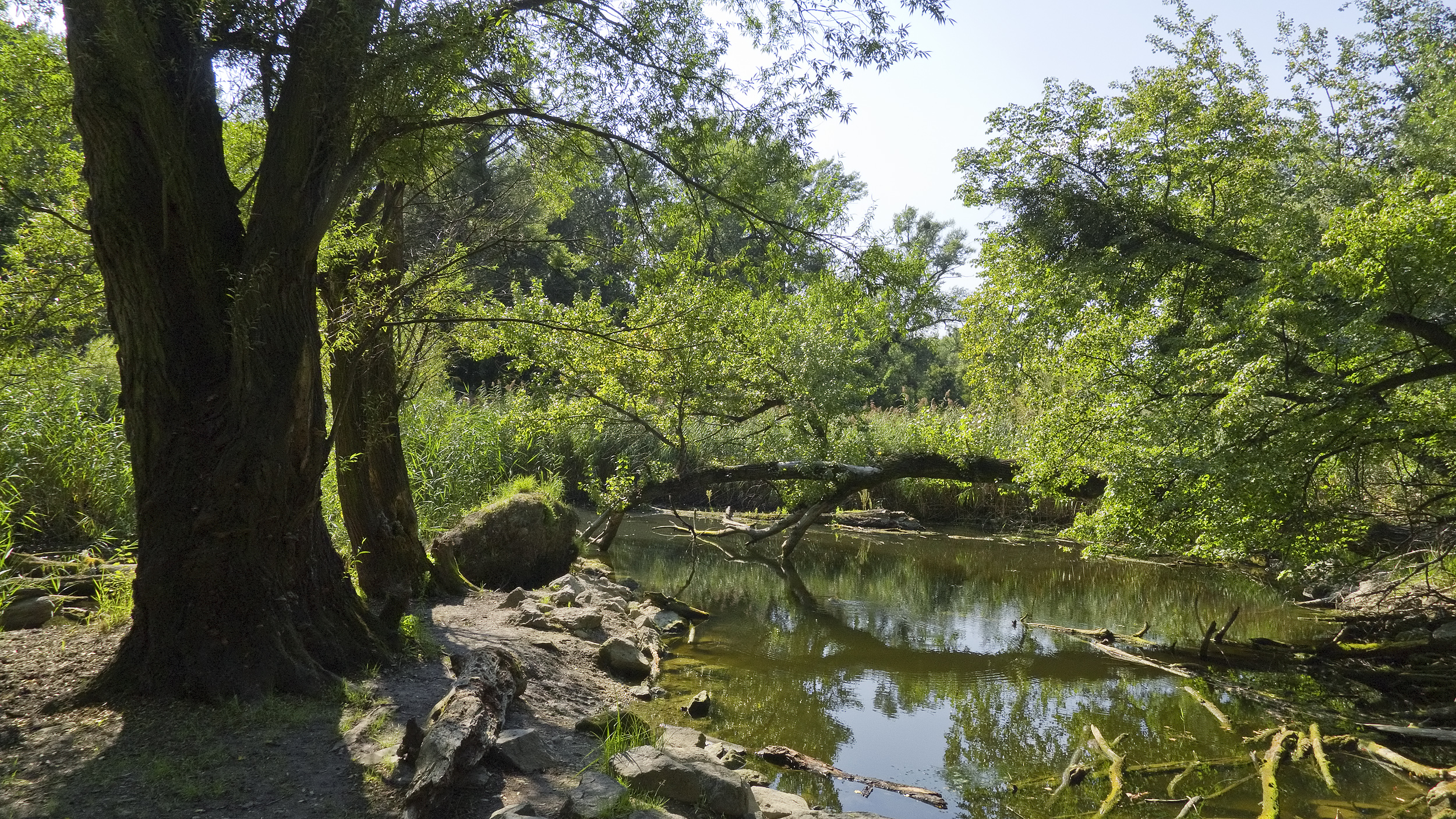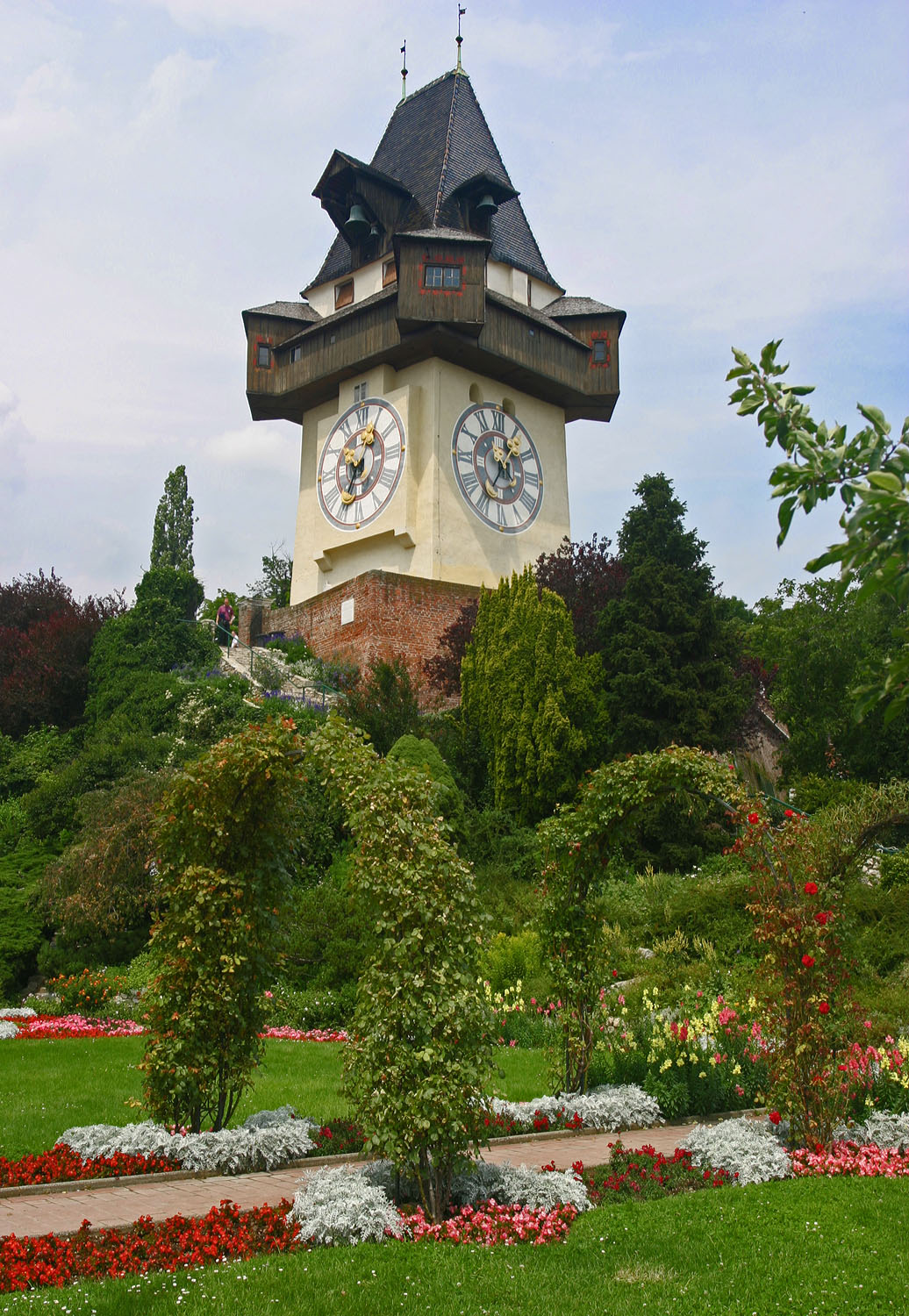|
Travel To Italy (Mácha)
''Diary of Journey to Italy'' (''Deník'' or ''Denník na cestě do Itálie'', 1834) is a Travel literature, travel book by Czech people, Czech poet Karel Hynek Mácha, which was likely not meant to be published. Journey Mácha with his friend Antonín Štrobach set off walking from Prague on 1834. They passed through Sázava (Benešov District), Sázava, Tábor, Český Krumlov, and Linz to Salzburg, where they went to the churches and galleries, then via Hellbrunn, Reichenhall, Innsbruck through Brenner Pass to Tarvisio and finally to Venice. The journey took three weeks; parts of it they went on post coach. They spent just one day and night in Venice, watched the city from the streets, bought some books by Alessandro Manzoni, Manzoni and went aboard a ship to go on to Trieste. From there they went through Postojna and Ljubljana, where they met the Slovenes, Slovene poet France Prešeren, to Graz. Mácha was impressed by Grazer Schloßberg, Grazer Schlossberg with its view of ... [...More Info...] [...Related Items...] OR: [Wikipedia] [Google] [Baidu] |
Travel Literature
The genre of travel literature encompasses outdoor literature, guide books, nature writing, and travel memoirs. One early travel memoirist in Western literature was Pausanias, a Greek geographer of the 2nd century CE. In the early modern period, James Boswell's ''Journal of a Tour to the Hebrides'' (1786) helped shape travel memoir as a genre. History Early examples of travel literature include the ''Periplus of the Erythraean Sea'' (generally considered a 1st century CE work; authorship is debated), Pausanias' ''Description of Greece'' in the 2nd century CE, ''Safarnama'' (Book of Travels) by Nasir Khusraw (1003-1077), the '' Journey Through Wales'' (1191) and '' Description of Wales'' (1194) by Gerald of Wales, and the travel journals of Ibn Jubayr (1145–1214), Marco Polo (1254–1354), and Ibn Battuta (1304–1377), all of whom recorded their travels across the known world in detail. As early as the 2nd century CE, Lucian of Samosata discussed history and tr ... [...More Info...] [...Related Items...] OR: [Wikipedia] [Google] [Baidu] |
Trieste
Trieste ( , ; sl, Trst ; german: Triest ) is a city and seaport in northeastern Italy. It is the capital city, and largest city, of the autonomous region of Friuli Venezia Giulia, one of two autonomous regions which are not subdivided into provinces. Trieste is located at the head of the Gulf of Trieste, on a narrow strip of Italian territory lying between the Adriatic Sea and Slovenia; Slovenia lies approximately east and southeast of the city, while Croatia is about to the south of the city. The city has a long coastline and is surrounded by grassland, forest, and karstic areas. The city has a subtropical climate, unusual in relation to its relatively high latitude, due to marine breezes. In 2022, it had a population of about 204,302. Capital of the autonomous region of Friuli Venezia Giulia and previously capital of the Province of Trieste, until its abolition on 1 October 2017. Trieste belonged to the Habsburg monarchy from 1382 until 1918. In the 19th century the mon ... [...More Info...] [...Related Items...] OR: [Wikipedia] [Google] [Baidu] |
Norma (opera)
''Norma'' () is a ''tragedia lirica'' or opera in two acts by Vincenzo Bellini with libretto by Felice Romani after the play ''Norma, ou L'infanticide'' (''Norma, or The Infanticide'') by Alexandre Soumet. It was first produced at La Scala in Milan on 26 December 1831. The opera is regarded as a leading example of the bel canto genre, and the soprano prayer "Casta diva" in act 1 is a famous piece. Among the well known singers of Norma of the first half of the 20th century was Rosa Ponselle who played the role in New York and London. Notable exponents of the title role in the post-war period have been Maria Callas, Leyla Gencer, Joan Sutherland, and Montserrat Caballé. Composition history Crivelli and Company were managing both La Scala and La Fenice in Venice, and as a result, in April–May 1830 Bellini was able to negotiate a contract with them for two operas, one at each theatre. The opera for December 1831 at La Scala became ''Norma'', while the one for the 1832 Carnival ... [...More Info...] [...Related Items...] OR: [Wikipedia] [Google] [Baidu] |
Vincenzo Bellini
Vincenzo Salvatore Carmelo Francesco Bellini (; 3 November 1801 – 23 September 1835) was a Sicilian opera composer, who was known for his long-flowing melodic lines for which he was named "the Swan of Catania". Many years later, in 1898, Giuseppe Verdi "praised the broad curves of Bellini's melody: 'there are extremely long melodies as no-one else had ever made before'." A large amount of what is known about Bellini's life and his activities comes from surviving letters—except for a short period—which were written over his lifetime to his friend Francesco Florimo, whom he had met as a fellow student in Naples and with whom he maintained a lifelong friendship. Other sources of information come from correspondence saved by other friends and business acquaintances. Bellini was the quintessential composer of the Italian '' bel canto'' era of the early 19th century, and his work has been summed up by the London critic Tim Ashley as: ... also hugely influential, as much a ... [...More Info...] [...Related Items...] OR: [Wikipedia] [Google] [Baidu] |
James Sheridan Knowles
James Sheridan Knowles (12 May 1784 – 30 November 1862) was an Irish dramatist and actor. Biography Knowles was born in Cork. His father was the lexicographer James Knowles (1759–1840), cousin of Richard Brinsley Sheridan. The family moved to London in 1793, and at the age of fourteen Knowles published a ballad entitled ''The Welsh Harper'', which, set to music, was very popular. His talents secured him the friendship of William Hazlitt, who introduced him to Charles Lamb and Samuel Taylor Coleridge. He served for some time in the Wiltshire and afterwards in the Tower Hamlets militia, leaving the service to become a pupil of Dr Robert Willan (1757–1812). He obtained the degree of M.D., and was appointed vaccinator to the Jennerian Society. Although Dr Willan offered him a share in his practice, Knowles decided to give up medicine for the stage, making his first appearance as an actor probably at Bath, and played Hamlet at the Crow Theatre, Dublin. At Wexford he marrie ... [...More Info...] [...Related Items...] OR: [Wikipedia] [Google] [Baidu] |
Wiener Prater
The Prater () is a large public park in Leopoldstadt, Vienna, Austria. The Wurstelprater, an amusement park that is often simply called "Prater", lies in one corner of the Wiener Prater and includes the Wiener Riesenrad Ferris wheel. Name The name Prater derives from one of two Latin words (or possibly both): ', meaning meadow; and '','' meaning magistrate or lawyer, possibly via Spanish ' or Italian '. History The area that makes up the modern Prater was first mentioned in 1162, when Emperor Friedrich I gave the land to a noble family called de Prato. The word "Prater" was first used in 1403, originally referring to a small island in the Danube north of Freudenau, but was gradually extended to mean the neighbouring areas as well. The land changed hands frequently until it was bought by Emperor Maximilian II in 1560 to be a hunting ground. To deal with the problem of poachers, Emperor Rudolf II forbade entry to the Prater. On 7 April 1766, Emperor Joseph II declared the Prat ... [...More Info...] [...Related Items...] OR: [Wikipedia] [Google] [Baidu] |
Hofburg
The Hofburg is the former principal imperial palace of the Habsburg dynasty. Located in the centre of Vienna, it was built in the 13th century and expanded several times afterwards. It also served as the imperial winter residence, as Schönbrunn Palace was the summer residence. Since 1946, it is the official residence and workplace of the president of Austria. Since 1279, the Hofburg area has been the documented seat of government.Aeiou-Hofburg-English , "Hofburg, Wien" (history), ''Encyclopedia of Austria'', Aeiou Project, 2006. The Hofburg has been expanded over the centuries to include various residences (with the ''Amalienburg'' and the ), the imperial chapel (''Hofkapelle'' or ''Burgkape ... [...More Info...] [...Related Items...] OR: [Wikipedia] [Google] [Baidu] |
Albert Pražák
Albert may refer to: Companies * Albert (supermarket), a supermarket chain in the Czech Republic * Albert Heijn, a supermarket chain in the Netherlands * Albert Market, a street market in The Gambia * Albert Productions, a record label * Albert Computers, Inc., a computer manufacturer in the 1980s Entertainment * ''Albert'' (1985 film), a Czechoslovak film directed by František Vláčil * ''Albert'' (2015 film), a film by Karsten Kiilerich * ''Albert'' (2016 film), an American TV movie * ''Albert'' (Ed Hall album), 1988 * "Albert" (short story), by Leo Tolstoy * Albert (comics), a character in Marvel Comics * Albert (''Discworld''), a character in Terry Pratchett's ''Discworld'' series * Albert, a character in Dario Argento's 1977 film ''Suspiria'' Military * Battle of Albert (1914), a WWI battle at Albert, Somme, France * Battle of Albert (1916), a WWI battle at Albert, Somme, France * Battle of Albert (1918), a WWI battle at Albert, Somme, France People * Albert (given n ... [...More Info...] [...Related Items...] OR: [Wikipedia] [Google] [Baidu] |
Baden Bei Wien
Baden (German for " Baths"; Central Bavarian: ''Bodn''), unofficially distinguished from other Badens as Baden bei Wien (Baden near Vienna), is a spa town in Austria. It serves as the capital of Baden District in the state of Lower Austria. Located about south of Vienna, the municipality consists of cadastral areas Baden, Braiten, Gamingerhof, Leesdorf, Mitterberg, Rauhenstein, and Weikersdorf. In 2021, the town became part of the transnational UNESCO World Heritage Site under the name "Great Spa Towns of Europe" because of its famous medicinal springs and its architectural testimony to the international spa culture on the 18th and 19th centuries. Geography and Geology Baden is located at the mouth of the Schwechat River's St Helena Valley (') in the Vienna Woods (') range. It takes its name from the area's 14 hot springs, which vary in temperature from and contain mineral salts including calcium carbonate, calcium chloride and magnesium sulphate. They lie for the most par ... [...More Info...] [...Related Items...] OR: [Wikipedia] [Google] [Baidu] |
Grazer Schloßberg
The Schlossberg ( en, Castle Hill), at above sea level, is a tree-clad hill, and the site of a fortress, in the centre of the city of Graz, Austria. The hill is now a public park and enjoys extensive views of the city. It is the site of several entertainment venues, cafés and restaurants, and is managed by Holding Graz, the city owned utility company. History The fortification of the Schlossberg goes back to at least the 10th century. In the mid-16th century, a long fortress was constructed by architects from the north of Italy. There are records of a cable-hauled lift being in use between 1528 and 1595 to move construction materials for the fortifications. The castle was never conquered, but it was largely demolished by Napoleonic forces under the Treaty of Schönbrunn of 1809. The clock tower (the ''Uhrturm'') and bell tower (the ''Glockenturm'') were spared after the people of Graz paid a ransom for their preservation. The remains of the castle were turned into a publ ... [...More Info...] [...Related Items...] OR: [Wikipedia] [Google] [Baidu] |
Graz
Graz (; sl, Gradec) is the capital city of the Austrian state of Styria and second-largest city in Austria after Vienna. As of 1 January 2021, it had a population of 331,562 (294,236 of whom had principal-residence status). In 2018, the population of the Graz larger urban zone (LUZ) stood at 652,654, based on principal-residence status. Graz is known as a college and university city, with four colleges and four universities. Combined, the city is home to more than 60,000 students. Its historic centre ('' Altstadt'') is one of the best-preserved city centres in Central Europe. In 1999, the city's historic centre was added to the UNESCO list of World Heritage Sites and in 2010 the designation was expanded to include Eggenberg Palace (german: Schloss Eggenberg) on the western edge of the city. Graz was designated the Cultural Capital of Europe in 2003 and became a City of Culinary Delights in 2008. Etymology The name of the city, Graz, formerly spelled Gratz, most likely stems ... [...More Info...] [...Related Items...] OR: [Wikipedia] [Google] [Baidu] |
France Prešeren
France Prešeren () (2 or 3 December 1800 – 8 February 1849) was a 19th-century Romantic Slovene poet whose poems have been translated into many languages.Database of translations – Prešeren , Slovene Book Agency, 2013 He has been considered the greatest Slovene classical poet and has inspired later . He wrote the first Slovene and the first Slovene epic. After his death, he beca ... [...More Info...] [...Related Items...] OR: [Wikipedia] [Google] [Baidu] |









